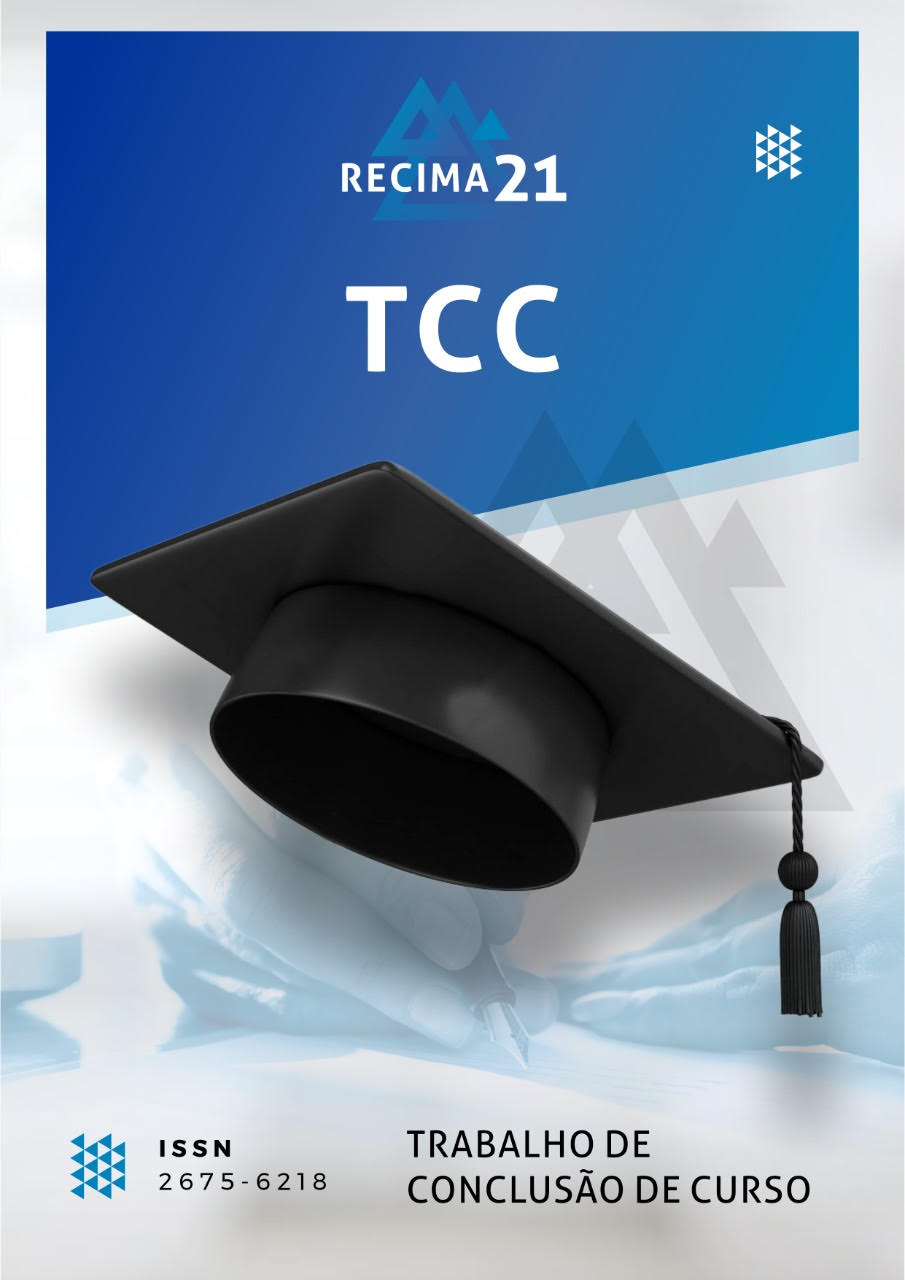THE IMPORTANCE OF OPTOMETRIC EVALUATION IN ABDUCENT NERVE
DOI:
https://doi.org/10.47820/recima21.v3i1.2040Keywords:
eyes work together from 6 pairs of extrinsic musclesAbstract
The eyes work together from 6 pairs of extrinsic muscles, the objective of this research is to expose the types of paralysis that can affect the abducens nerve, either in its nucleus or in the path it travels through the skull to the eyeball where innervates the lateral rectus muscle. The optometrist must improve his look for neurological alterations. From reviews carried out in books and articles in Scielo and PubMed, on changes in ocular motility with possible changes in the face, hearing, taste and hemiplegia, these situations can affect patients, since they are changes caused by systemic diseases such as diabetes that in According to the WHO, Brazil has 15.7 million people with the disease, ranking 6th in the world. The etiologies of the VI cranial nerve paresis and palsy, syndromes and injuries to the VI cranial nerve, main symptoms such as convergent strabismus or esotropia, accompanied by torticollis and diplopia. The treatments consist of; pharmacological treatment with botulinum toxin to reduce the contracture of the MR which becomes hypertonic, and on the surgical procedure with the Carlsos & Jampolsky transposition. Syndromes that can be acquired in an acquired form, such as in lesions caused by tumors, vascular diseases and infections, and congenitally, such as Moebius and Duane syndrome, recent studies have presented a picture of sixth nerve palsy and alteration in the rectus muscle. side by COVID-19 and post immunization for the virus.
KEYWORDS: Paralysis; Abducens Nerve; squint; optometry.
Downloads
References
ALVES, M.R. et al. Estrabismo. CBO – Série Oftalmologia Brasileira. 3ª Ed. Rio de Janeiro: Cultura Médica, 2013.
BICAS, H. Oculomotrocidade e seus fundamentos, Arquivo Brasileiro de Oftalmologia.66: 687- 700; (2003). Disponível em: https://www.scielo.br/j/abo/a/9m4xcLFTNfKYc55LPQdWVfS/abstract/?lang=pt acesso em: 14 set.2022.
CURI R. L. N.; COSTA I.C. B. O.; BARROSO T. G. M. Paralisia do VI nervo (artigo de revisão). Rio de janeiro: revista brasileira de oftalmologia, 2013. https://doi.org/10.1590/S0034-72802013000100014 . Disponível em: https://www.scielo.br/j/rbof/a/Gtw6KnT84VkTYQgMBhkG9Wc/?format=html&lang=pt
DIAZ-FLORES, T. et al. Frequência e evolução das paralisias oculomotoras em pacientes diabéticos no Instituto Mexicano de Oftalmología. Revista mexicana de oftalmologia. [online]. 2019, vol.93, n.1, pp.26-30. Epub 06-Ago-2021. ISSN 2604-1227. https://doi.org/10.24875/rmo.m18000055 . Disponível em: https://www.scielo.org.mx/scielo.php?pid=S260412272019000100026&script=sci_abstract&tlng=en acesso em: 14 set.2022.
EJZENBAUM, F.et al. Treatment outcomes in VI nerve palsy corrected by Carlson & Jampolsky technique. Arquivo Brasileiro de Oftalmologia. 2007;70(6):967-70. Disponível em: https://www.scielo.br/j/abo/a/HXxRxhVxb4hbnBcLW37wNbn/?lang=en acesso em:14 set.2022.
FELIX, F. et al. Tratamento conservador da síndrome de Gradenigo (relato de caso). Rio de janeiro: revista brasileira de otorrinolaringologia, 2003.Disponível em: https://www.scielo.br/j/rboto/a/DrVKhb44HHLbWZMLp5DCCsm/?lang=pt acesso em: 14 set.2022.
GAMA, R. ABC da Diplopia, Lisboa, 1st Ed; Lisboa, 2016.
KANSKI, J. J. Oftalmologia Clínica. 6°. Rio de Janeiro: Elsevier, 2008.
LÓPEZ SOBRINO, G. Síndrome de Duane (monografia). Revista web pediátrica. Madrid: hospital infantil la paz, 2013. Disponível em: http://www.webpediatrica.com/casosped/pdf/123_duane.pdf. acesso em: 14 set.2022.
LAJME, H. et al. Paralisia oculomotora em diabéticos. Fr Oftalmol. 2018 janeiro;41(1):45-49. doi: 10.1016/j.jfo.2017.06.010. Disponível em: https://pubmed.ncbi.nlm.nih.gov/29290461/ acesso em: 14 set.2022.
LUVIZUTTO G.J.; PASCUCCI, L. A. Avaliação Neurológica funcional. 1 ed. Curitiba: Appris, 2022.
MOREIRA A.T.R.; et al. Síndrome de Moebius associada a artogripose: relato de caso e revisão da literatura. Arquivo Brasileiro de Oftalmologia, 2001;64:576-9. Disponível em: https://www.scielo.br/j/abo/a/gJ8CrKh6LbCBzwcc56wtyMM/?lang=pt acesso em: 14 set.2022.
VON NOORDEN, G. Binocular vision and ocular motility: theory and management of strabismus, 6th Ed, 2002.
REYRES-CAPO, D.P.; STEVENS, S.M.; CAVUOTO, K.M. Paralisia Aguda do Nervo Abducente após a vacinação COVID-19. 24 de maio 2021, DOI: https://doi.org/10.1016/j.jaapos.2021.05.003. Disponível em: https://www.jaapos.org/article/S1091-8531(21)00109-9/fulltext acesso em: 14 set.2022.
ROWE, F. Clinical Orthoptics, Liverpool, 3ª Ed, 2012.
SANTOS, A. Toxina Botulínica. Arquivo Brasileiro de Oftalmologia. 60(5), outubro, 1997. http://dx.doi.org.10.5935/0004-2749.19970039 Disponível em: https://www.scielo.br/j/abo/a/tscGSvs54QWBFyS6WQjwwvw/?format=pdf&lang=pt
acesso em: 14 set.2022.
SORIA M. El diagnóstico de las parálisis oculares extrínsecas. Academia de Medicina de Barcelona. Sesión científica del día 15 de febrero de 1932. Disponível em: https://raco.cat/index.php/AnnalsRAMC/article/view/207494 acesso em: 14 set.2022. nervo abducente após a
Downloads
Published
How to Cite
Issue
Section
Categories
License
Copyright (c) 2022 RECIMA21 - Revista Científica Multidisciplinar - ISSN 2675-6218

This work is licensed under a Creative Commons Attribution 4.0 International License.
Os direitos autorais dos artigos/resenhas/TCCs publicados pertecem à revista RECIMA21, e seguem o padrão Creative Commons (CC BY 4.0), permitindo a cópia ou reprodução, desde que cite a fonte e respeite os direitos dos autores e contenham menção aos mesmos nos créditos. Toda e qualquer obra publicada na revista, seu conteúdo é de responsabilidade dos autores, cabendo a RECIMA21 apenas ser o veículo de divulgação, seguindo os padrões nacionais e internacionais de publicação.













